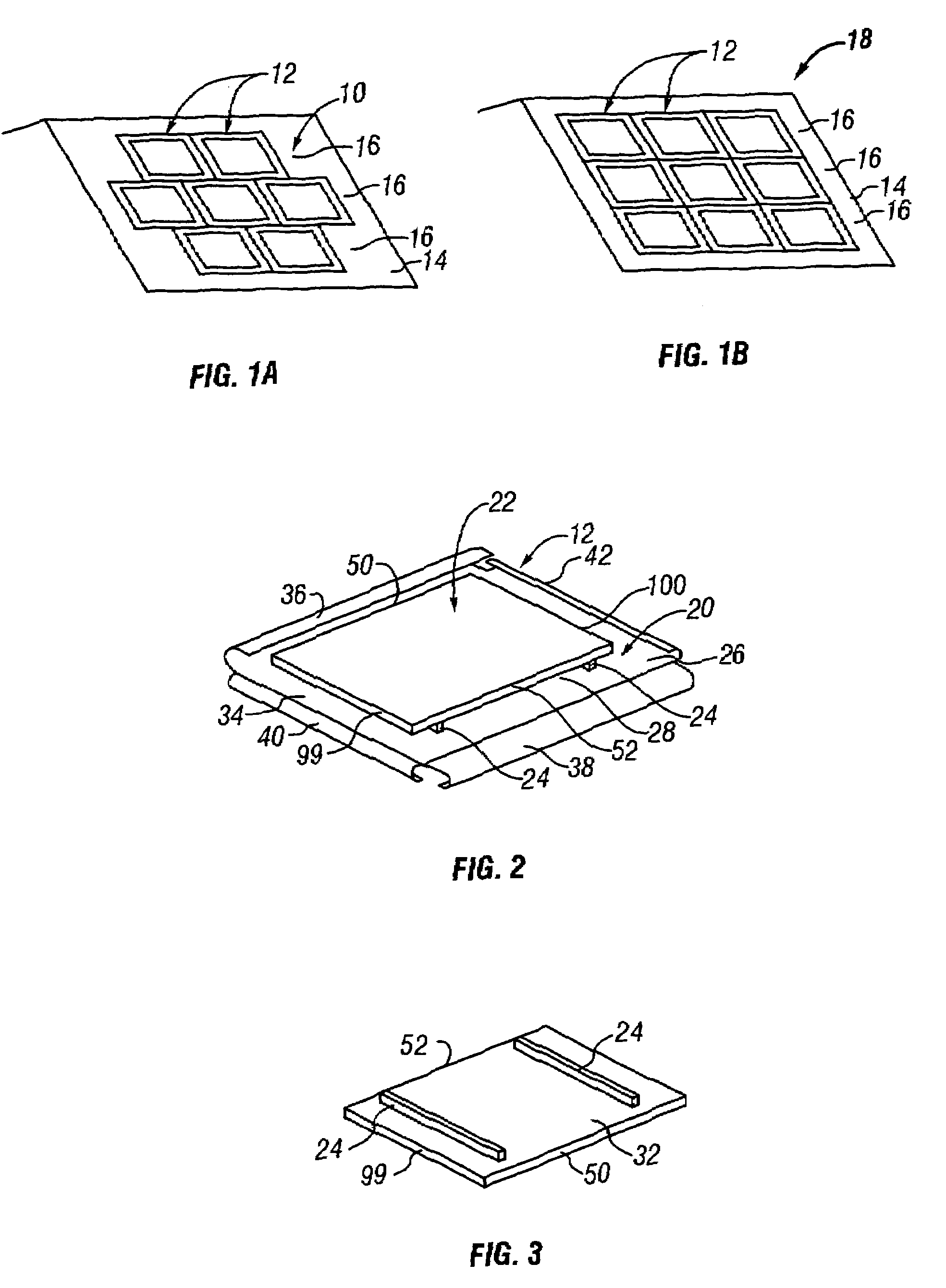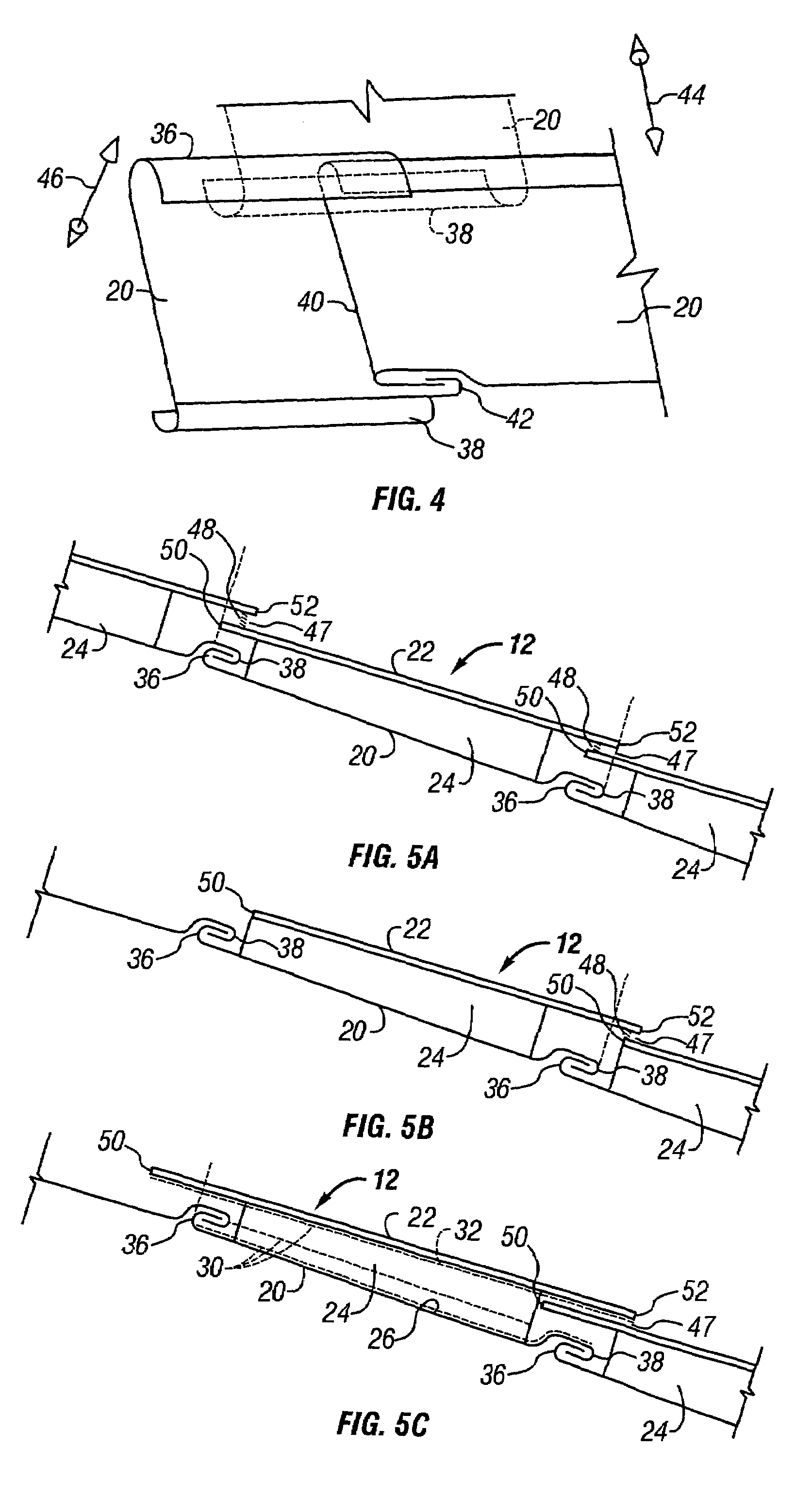Shingle system
a technology of shingle and insulating plate, which is applied in the safety of solar heat collectors, pv power plants, lighting and heating apparatus, etc., can solve the problems of shortening the useful life, reducing the electrical output of pv, and cost and aesthetics, so as to increase reduce the temperature of pv modules , the effect of increasing the efficiency of pv modules
- Summary
- Abstract
- Description
- Claims
- Application Information
AI Technical Summary
Benefits of technology
Problems solved by technology
Method used
Image
Examples
Embodiment Construction
[0038]The present invention is directed to shingle assemblies that can be mounted to inclined surfaces, such as the roof of a building, with the shingle assemblies in one row being either laterally offset or laterally aligned with the shingle assemblies in adjacent rows. FIG. 1A illustrates an array 10 of PV shingle assemblies 12 mounted to an inclined roof 14 with the rows 16 of shingle assemblies 12 laterally offset from one another. FIG. 1B shows an array 18 of PV shingle assemblies 12 also mounted to an inclined roof 14 with the rows 16 of shingle assemblies 12 laterally aligned with the shingle assemblies in an adjacent row. While the present invention will typically refer to the inclined support surface as roof 14, other inclined support surfaces, such as shed, deck, walkway covering, lattice structure, may also be used. Various embodiments of shingle assemblies will be described below with like elements being referred to with like reference numerals.
[0039]FIGS. 2 and 3 illust...
PUM
 Login to View More
Login to View More Abstract
Description
Claims
Application Information
 Login to View More
Login to View More - R&D
- Intellectual Property
- Life Sciences
- Materials
- Tech Scout
- Unparalleled Data Quality
- Higher Quality Content
- 60% Fewer Hallucinations
Browse by: Latest US Patents, China's latest patents, Technical Efficacy Thesaurus, Application Domain, Technology Topic, Popular Technical Reports.
© 2025 PatSnap. All rights reserved.Legal|Privacy policy|Modern Slavery Act Transparency Statement|Sitemap|About US| Contact US: help@patsnap.com



